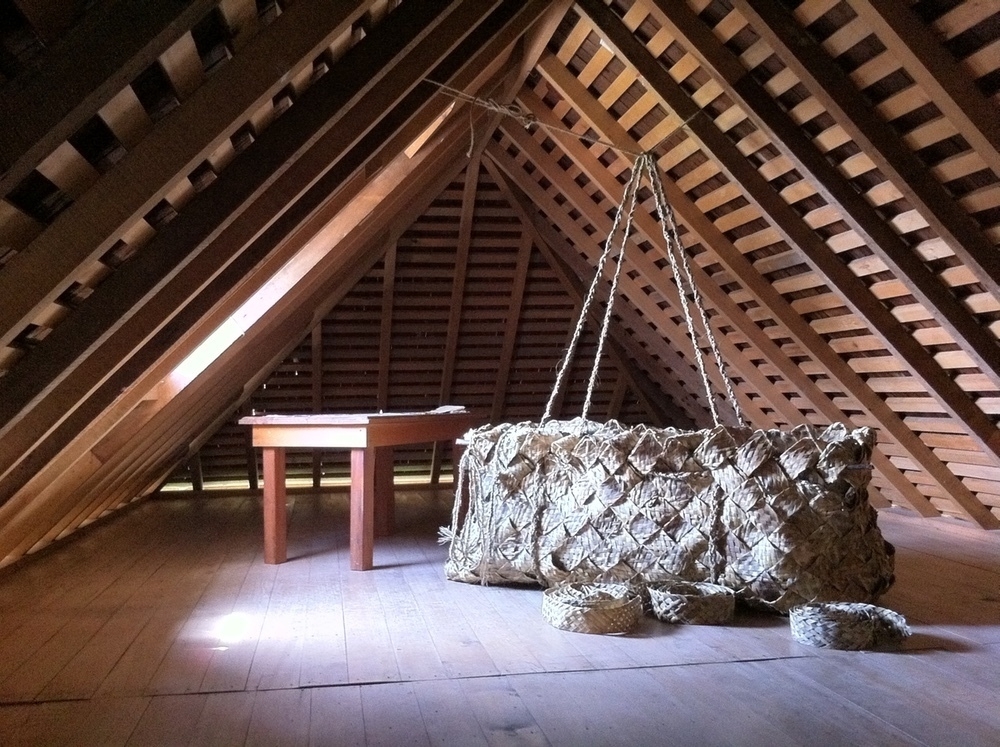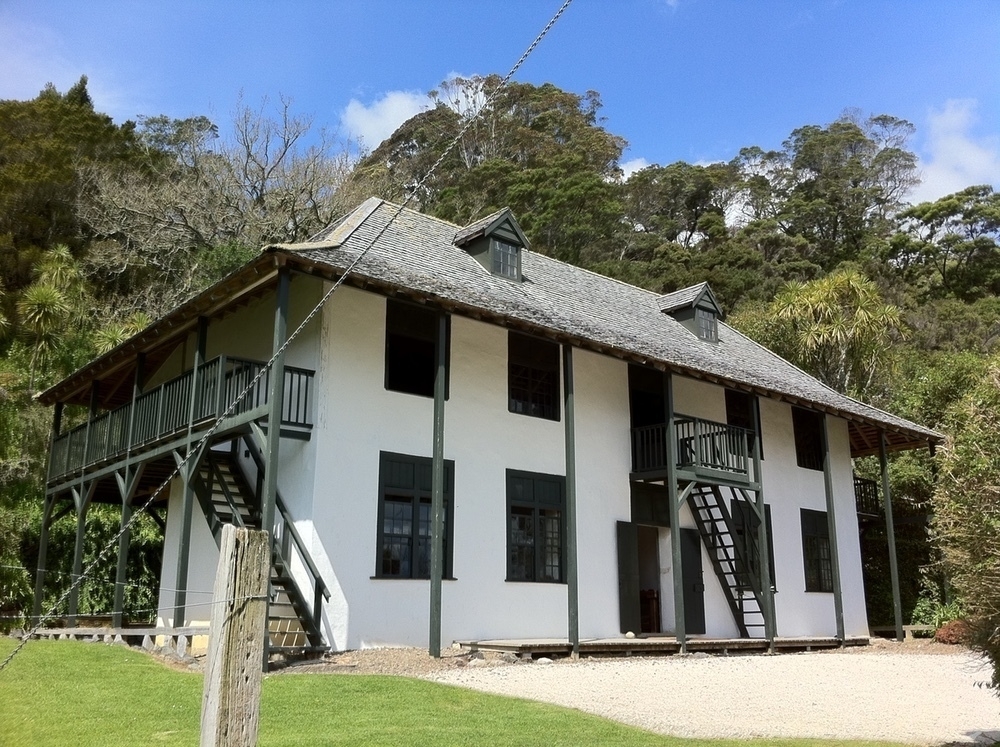This is a kete nui:

Not that a “big basket” was what we were looking for, as we did the tourist thing in one of New Zealand’s oldest settlements.
Russell, formerly Kororareka, the “hell hole of the Pacific”, and haunt of the legendary Bully Hayes, is now a polite, and somewhat dull tourist town, though very pretty.

We had caught the ferry over from Paihia, a town now far more deserving of the “hellhole” appellation; smothered in motels and tourist villas; slow moving grey geese; and overpriced cafés with imported and stale coffee beans.
Back in the wild old days the protestant English and Catholic French were vying for supremacy in the all-important tally of who could convert the most “natives” (though all the natives really wanted was guns) and so the Marist brothers were sent out from Lyon to Kororareka to do their thing.
And so they set up this building, a factory for making books. A tannery downstairs, and upstairs printing presses and paper making.

There is something pretty moving about that. Here was the birth of literacy in New Zealand; some really hard work creating a Māori version of the Bible; printing it and distributing it. Even if you don’t agree with the content of the message, it’s a pretty big step, setting up a printing press in a lawless land and teaching the locals to read.
As it happens the locals were pretty self-sufficient anyway, and in the end only the weight of immigrant numbers–my ancestors, much later, among them–overcame the locals after some close-run wars, but still, something started here that could not be stopped. You have to wonder how many of Pompallier’s bibles ended up read avidly by fevered Hau Hau and prophets of vision.
On the other hand, Māori didn’t need the bible to be independent businessmen of note, supplying the still thin Australian colonies with food for many years before they managed to become self-sufficient. So literacy is over-rated, from some points of view.
With all that in my mind, we climbed up into the attic of the Pompallier Mission. And here was something different again, the kete nui, something the locals of now had made using techniques of old.
Which is all very interesting. But the size and shape suggested other uses, a vagrant thought that was confirmed for me when the lady collecting the money on the entrance way asked if I thought the kete nui looked like a coffin.
Well yes, that’s what I thought too. But whose?